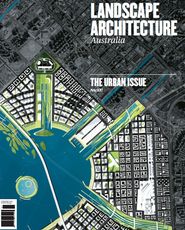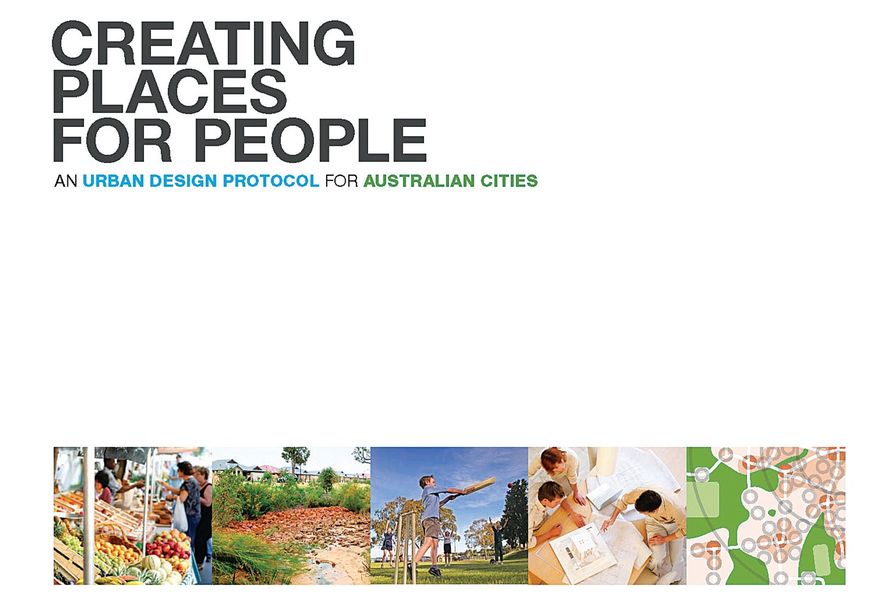Currently, at a national level, there is much activity underway to increase our understanding of urban systems and thereby improve the way we plan, design, build and govern our major cities.
By mid 2012 we had a national objective on the strategic planning of our eight capital cities agreed by the Council of Australian Governments (COAG), a National Urban Policy, an Urban Design Protocol, annual reports on the State of Australian Cities, and a National Ports Strategy were produced. Progress was also being made on an active travel policy, a national land freight strategy and a feasibility study on high-speed rail linking the main cities of the east coast.
The challenges we’re grappling with at a national level are significant: a growing and ageing population; inadequate housing supply and pressure on housing and living affordability; urban transport congestion; the implications of increased globalization; uncertainties about how to deal with climate change; and pressures on our environment from increasing wealth and consumption.
In May 2011 the Australian Government released Our Cities, Our Future: a national urban policy for a productive, sustainable and liveable future. It was the first time that an Australian Government had outlined its overarching goals for the nation’s cities and what role the government plays in making cities more productive, sustainable and liveable.
Our Cities, Our Future focused on the eighteen major cities with populations over 100,000. It recognized the role of state, territory and local governments, the private sector and individuals, in planning, managing and investing in cities to ensure their prosperity into the future. It also acknowledged that the Australian Government makes decisions that have an impact on urban Australia, and that it could facilitate better outcomes in our cities in its direct investments, and through influencing the actions of others.
The importance of the cities agenda was also recognized by COAG, which comprises the Prime Minister, State Premiers, Territory Chief Ministers and the President of the Australian Local Government Association. COAG agreed to a reform objective ‘to ensure Australian cities are globally competitive, productive, sustainable, liveable, socially inclusive and well placed to meet future challenges and growth.’
The COAG Reform Council was tasked to independently review the consistency of capital city strategic planning systems against nine criteria which included: providing future-oriented plans for up to thirty years; providing for nationally significant infrastructure such as transport corridors, international gateways, major communications and utilities infrastructure, and reservation of lands to support future expansion; addressing nationally-significant policy issues such as population growth, global competitiveness, climate change, connectivity of people to jobs, social inclusion, health and wellbeing, housing affordability, and matters of national environmental significance; strengthening networks between capital cities and major regional centres; sequenced and evidence-based land release and an appropriate balance of infill and greenfields development; and encouraging world-class urban design and architecture.
The review found that, whilst many of the issues were well addressed, none of the capital city strategic planning systems were wholly consistent with all of the agreed criteria. It expressed concern that, when it came to addressing nationally significant policy issues, a number of vital issues had not been adequately addressed including demographic change, housing affordability and social inclusion.
The question remains as to whether the eight capital city planning systems, and those of the major regional cities such as Newcastle, Geelong, Wollongong, the Gold Coast and others, fully consider Australia’s long-term future as a whole.
If we are to properly address how Australian cities will be shaped, these strategic issues need to be addressed at a national, regional and local level. It is not simply a case of one body working alone: it takes the combined efforts of all three levels of government, working with business, academia and the community, to provide the strategic planning, implementation, review and reforms required.
One particular criterion of the COAG cities review, to encourage world-class urban design and architecture, provides an example of the Australian Government working in collaboration with peak community and industry organisations, state, territory and local governments.
Creating Places for People – an urban design protocol for Australian cities is a web-based tool that establishes twelve broadly agreed principles for quality urban places in the Australian context. These principles are intended to be applied to any project or location – whether in a large capital city, regional centre or rural town. The aim is “to create productive, sustainable and liveable places for people through leadership and the integration of design excellence.” It recognizes that urban design is both a process and an outcome. It has four principles about process, and eight principles about the characteristics or outcomes that urban design is aiming to achieve.
The Urban Design Protocol is currently championed by forty organizations including several Australian government agencies, state and territory governments, the Australian Local Government Association, the Council of Capital City Lord Mayors, National Growth Areas Alliance, several local governments, the Planning Institute of Australia, Australian Institute of Architects, Australian Institute of Landscape Architects, Green Building Council, Australian Green Infrastructure Council, Property Council of Australia, Consult Australia, National Heart Foundation, Water Services Association, and a range of academic institutions and private organizations.
The principles of the protocol have been incorporated into the Australian Green Infrastructure Council’s Infrastructure Sustainability rating tool and the Green Building Council of Australia’s Green Star-Communities rating tool. A number of state and local governments have also started to incorporate the protocol into their practices, guidelines and planning instruments.
As a model for how these disparate bodies can work together, the Urban Design Protocol is a good start. Its future success will be influenced by whether the protocol remains relevant, and is supported by its champions into the future.
This excerpt from Made in Australia: The Future of Australian Cities (University of Western Australia Publishing) was reprinted with permission in the 2013 Urban Issue of Landscape Architecture Australia 137.
Source

Discussion
Published online: 20 Jun 2013
Words:
Dorte Ekelund,
Sara Stace
Issue
Landscape Architecture Australia, February 2013
















